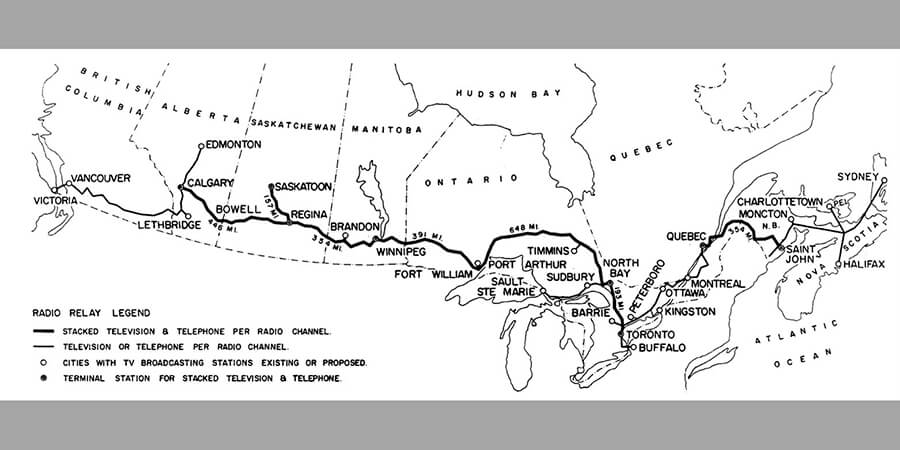Trans-Canada Microwave System officially opened on July 1, 1958, and since then, it made an immense impact on both Canadian society and the economy.
In 1958, the Trans-Canada Microwave System introduced live network television and direct-dialed long-distance telephone service to Canadians from coast to coast. Comprising 139 relay towers spanning more than 6,275 kilometers from Victoria, B.C. to Sydney, NS, it was, when completed, the world's longest microwave network.
Extended and upgraded several times during its four decades of operation, it laid the foundation for most of the telecommunication infrastructure that we rely upon today.
The IEEE, Engineering Institute of Canada (EIC), and the Canadian National Committee of the International Union of Radio Science (CNC-URSI) partner with Bell Canada, TELUS, and SaskTel to recognize one of the greatest engineering achievements in Canadian history.
"As Canada celebrates its 155th birthday, IEEE Canada is proud to partner with EIC, CNC-URSI, Bell, TELUS, and SaskTel to recognize and remember the completion of the Trans-Canada Microwave System in 1958. It was arguably the greatest exercise in nation-building that Canada had seen since the completion of the Canadian Pacific Railway in 1885 and one of the greatest engineering accomplishments in Canadian history,” said Robert Anderson, IEEE Canada's President.
 A Trans-Canada microwave relay station in downtown Toronto, 1953
A Trans-Canada microwave relay station in downtown Toronto, 1953
“It's a testament to our Canadian innovation that has since continued to evolve, maintaining our global leadership position as having one of the best networks in the world," said Ibrahim Gedeon, TELUS's Chief Technology Officer, and IEEE Fellow.
“ It was a significant achievement, and since then we've been able to connect even more Canadians in communities large and small, and in rural and remote locations across the country,” said Stephen Howe, Bell's Chief Technology and Information Officer.
The recognition will also kick off the Trans-Canada Microwave System History Project, an effort to reach out to the thousands of Canadian engineers with recollections and memorabilia of the system and preserve these in a digital archive to be jointly administered by IEEE Canada and the CNC-URSI.





